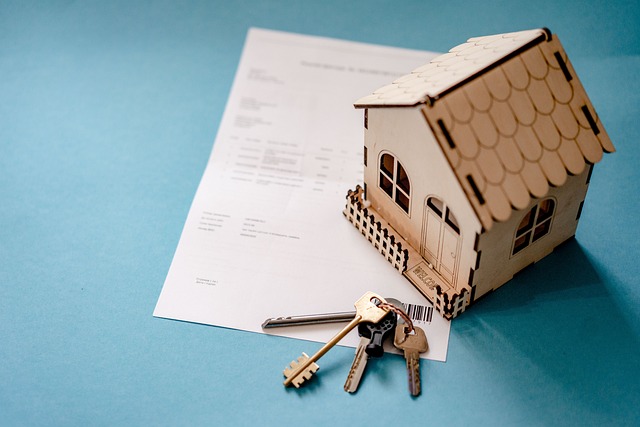Bankruptcy can feel like a financial roadblock, especially when you need reliable transportation for work, family, or daily life. If you’ve recently filed for Chapter 7 or Chapter 13 bankruptcy, securing an auto loan might seem impossible. The good news? It’s absolutely possible to get a car loan after bankruptcy in 2025. While your credit score takes a hit—often dropping below 500—and stays on your report for 7 to 10 years, many lenders specialize in helping post-bankruptcy borrowers rebuild their financial future. With the right steps, a solid plan, and patience, you can drive away with a vehicle that fits your budget.
In this guide, we’ll break down everything you need to know about getting an auto loan after bankruptcy. From understanding the types of bankruptcy to practical steps, tips for approval, and expected costs, this article is designed to be straightforward and actionable. Whether you’re shopping for a new or used car, we’ll cover SEO-friendly strategies like prequalification, down payments, and credit rebuilding to make the process smoother. By the end, you’ll have a clear roadmap to approval, even if your credit is still recovering. Remember, consistent on-time payments on your new loan can boost your score quickly, setting you up for refinancing at lower rates down the road.
Understanding Bankruptcy and Its Impact on Auto Loans
Bankruptcy wipes out or restructures debt, but it signals high risk to lenders, leading to higher interest rates and stricter terms for auto loans. The two main types—Chapter 7 and Chapter 13—affect your timeline and options differently.
Chapter 7 Bankruptcy: Liquidation and Quick Recovery
Chapter 7, often called “straight bankruptcy,” discharges most unsecured debts like credit cards in 3 to 6 months. It stays on your credit report for 10 years. The upside? You can apply for a car loan almost immediately after discharge, as lenders see you as less risky without lingering debts. However, expect scrutiny on your income stability.
Chapter 13 Bankruptcy: Repayment Plan and Slower Access
Chapter 13 involves a 3- to 5-year court-approved repayment plan for debts. It remains on your report for 7 years. You can’t get a new auto loan until the plan is confirmed, typically 6 months after filing (up to 9-12 months). During the plan, buying a car requires court approval, but you can roll existing car payments into it for relief.
Here’s a quick comparison table to highlight the key differences:
| Aspect | Chapter 7 Bankruptcy | Chapter 13 Bankruptcy |
|---|---|---|
| Duration on Credit Report | 10 years | 7 years |
| Time to Loan Eligibility | Immediately after discharge (3-6 months total) | After plan confirmation (6-12 months) |
| Loan During Process | Possible post-341 meeting | Requires court permission |
| Impact on Existing Car Loan | May need to reaffirm or surrender | Can lower payments via plan |
| Typical Wait for Better Rates | 12-24 months post-discharge | 12-24 months post-confirmation |
This table shows why Chapter 7 borrowers often secure loans faster, but both require proof of financial recovery.
Rebuilding starts right away: Check your credit reports from Experian, TransUnion, and Equifax for errors, and dispute inaccuracies. Bankruptcy’s weight fades over time, so waiting 120 days post-discharge before applying can help.
Step-by-Step Guide: How to Get an Auto Loan After Bankruptcy
Getting approved doesn’t have to be overwhelming. Follow these clear, sequential steps tailored for 2025’s lending landscape. Focus on affordability—aim for payments under 10-15% of your monthly income.
Step 1: Assess Your Finances and Needs
Before diving in, evaluate if you truly need a new car. Calculate total ownership costs: loan payments, insurance (which may rise post-bankruptcy), gas, maintenance, and registration. Use free online calculators to ensure payments fit your budget.
- Gather Documents: Prepare proof of income (pay stubs, tax returns), residency (utility bills), and references (at least 8 personal ones). Steady employment with $1,500+ monthly income is a must for most lenders.
- Decide on New vs. Used: Used cars often have lower rates and payments, making them ideal for rebuilding credit.
If your current ride is reliable, delay buying to save for a down payment and boost your score.
Step 2: Rebuild and Check Your Credit
Your FICO score likely sits in the subprime range (below 600), but small actions add up.
- Get Free Reports: Pull annualcreditreport.com weekly in 2025 for monitoring.
- Build Positive History: Open a secured credit card (deposit equals limit) and use it for small purchases, paying in full monthly. Consider credit-builder loans that report payments to bureaus.
- Timeline Tip: Wait 6 months post-discharge for Chapter 7; longer for Chapter 13 to see score improvements.
Aim for a score above 500—many lenders approve there.
Step 3: Save for a Down Payment
Lenders love skin in the game. A 10-20% down payment reduces risk and lowers your loan amount.
- Target Amount: For a $20,000 car, save $2,000-$4,000. Use high-yield savings accounts (4-5% APY in 2025) to grow funds.
- Why It Helps: It can drop your rate by 1-2% and improve approval odds by 30-50%.
Budget $100-200 monthly during recovery.
Step 4: Shop and Prequalify with Lenders
Compare at least three options to avoid settling for bad terms.
- Prequalify Online: Soft credit checks won’t hurt your score. Sites like LendingTree or NerdWallet aggregate offers.
- Get Preapproved: Once you like an offer, apply for formal preapproval (hard inquiry, but worth it for negotiation power).
- Dealership vs. Bank: Start with external financing to haggle at dealers.
Apply within a 14-45 day window to minimize score dings.
Step 5: Choose and Finalize Your Loan
Pick the car within your preapproved budget—stick to reliable models like Honda Civic or Toyota Corolla for low maintenance.
- Negotiate: Use preapproval to push for better rates.
- Sign Smart: Review APR, fees, and prepayment penalties. Avoid add-ons like gap insurance unless needed.
- Drive Off: Make your first payment on time to start rebuilding.
Post-purchase, track payments via apps like Mint.
These steps typically take 1-3 months, depending on your bankruptcy type.
Tips for Boosting Your Approval Chances
Even with bankruptcy, these proven strategies can tip the scales in your favor. Lenders prioritize stability over past mistakes.
- Add a Cosigner: A friend or family member with good credit (670+) can secure lower rates and higher limits. Discuss risks upfront—they’re liable if you miss payments.
- Prove Income Stability: Show 6+ months of consistent pay. Self-employed? Provide tax docs. Low debt-to-income (DTI) under 36% is gold.
- Target Subprime Specialists: Skip big banks; focus on credit unions or bad-credit lenders like Upstart or Autopay, which approve scores in the 500s.
- Avoid Predatory Offers: Watch for “buy-here, pay-here” lots with 20%+ rates. Read fine print for hidden fees.
- Time It Right: Apply 12-24 months post-bankruptcy for rates 2-3% lower than immediate post-discharge.
- Bundle Insurance: Shop for auto insurance early—rates may spike 20-50% post-bankruptcy, but discounts for safe driving help.
Track progress with free credit monitoring tools. On-time payments alone can raise your score 50-100 points in 6 months.
What to Expect: Costs, Rates, and Terms in 2025
Post-bankruptcy loans come at a premium, but transparency helps. Average new car rates are 6.73%, used at 11.87% overall, but subprime borrowers pay more.
Here’s a table of average auto loan rates by credit score tier in Q3 2025 (Experian data):
| Credit Score Tier | New Car APR | Used Car APR | Typical Loan Term |
|---|---|---|---|
| Super Prime (781-850) | 5.25% | 7.50% | 60-72 months |
| Prime (661-780) | 6.50% | 9.00% | 60 months |
| Nonprime (601-660) | 9.97% | 13.95% | 48-60 months |
| Subprime (501-600) | 13.38% | 18.90% | 36-48 months |
| Deep Subprime (300-500) | 15.97% | 21.58% | 24-36 months |
For bankruptcy filers (often deep subprime), expect 15-22% APR initially, adding $3,000-$5,000 in interest over 60 months on a $15,000 loan. Shorter terms save money but raise payments. Refinance after 12 months once your score hits 600+.
Budget extra for higher insurance—shop quotes from Progressive or Geico for bankruptcy-friendly policies.
Recommended Lenders for Post-Bankruptcy Auto Loans
Look for flexible options:
- Credit Unions: Navy Federal or PenFed offer rates 1-2% below banks for members.
- Online Lenders: Upstart uses AI for non-traditional approvals; Autopay specializes in bad credit.
- Dealership Programs: “New Start” at places like Lou Fusz Chevrolet guarantee approval with basic docs.
Always prequalify first.
Alternatives If a Loan Isn’t Feasible Yet
- Pay Cash: Save for a reliable used car under $10,000 via Craigslist or Facebook Marketplace.
- Lease Instead: Lower upfront costs, but mileage limits apply.
- Public Transit or Rideshares: Temporary bridge while rebuilding.
These keep you mobile without debt.
Conclusion: Reclaim Your Wheels and Your Future
Getting an auto loan after bankruptcy is challenging but empowering. By following these steps—assessing finances, rebuilding credit, saving for down payments, and shopping smart—you’ll not only get approved but also set yourself up for long-term success. Remember, this loan is a stepping stone: Make payments on time, refinance when possible, and watch your credit soar. In 2025, with rates stabilizing and more inclusive lenders, your fresh start is just a drive away. Consult a financial advisor for personalized advice, and happy motoring!










